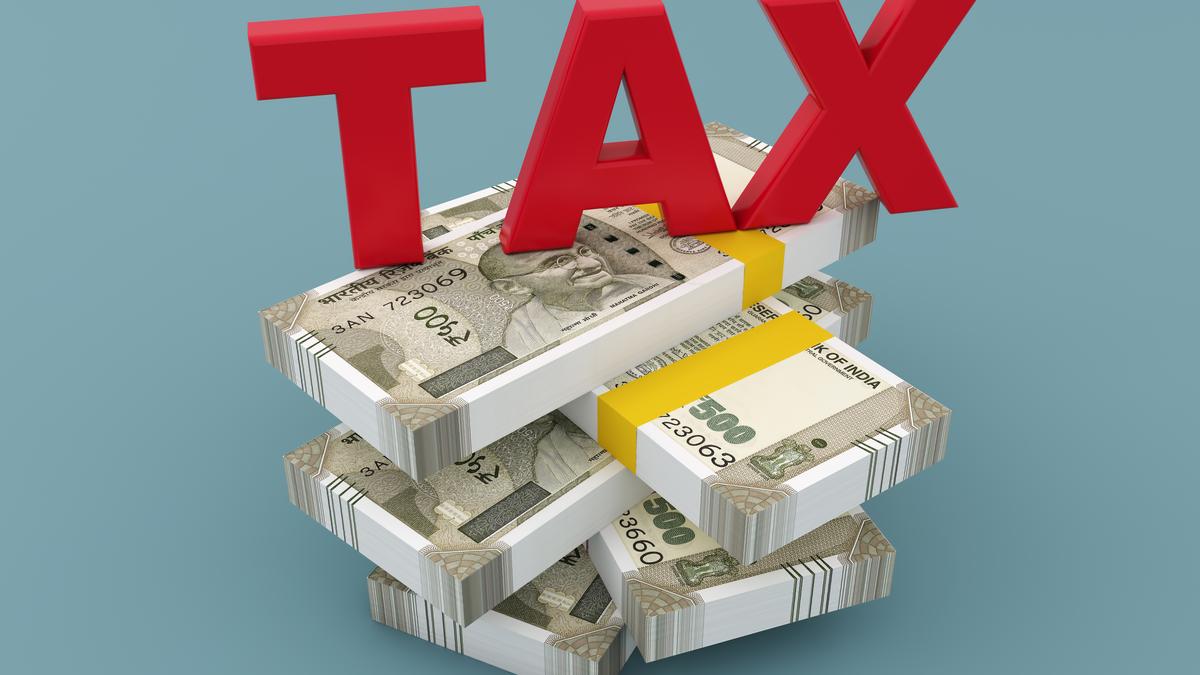Over the last decade, States have been relying more and more on transfers and grants from the Centre.
In the last decade (FY16 to FY25), 23-30% of the total revenue of States was collected from the Centre as transfers. However, in the 2000s and the first half of 2010, the share was 20-24%. Also, close to 65-70% of the non-tax revenue of States was collected from the Centre as grants in the last decade compared to the 2000s and the first half of the 2010s when the share was lower at 55-65%.
States have also not done enough to efficiently collect taxes to increase their own tax revenue. In addition, revenue from non-tax revenue, other than Central grants, has been diminishing.
The combination of these factors has meant that the dependency of States on Central funds has risen in recent years.
Chart 1 shows the share of States’ own tax revenue, non-tax revenue, and Central transfers in their total revenue. For over a decade now, States’ own tax revenue as a share of their total revenue has remained considerably below the 50% mark, while in the 2000s and in the early 2010s, it had crossed the 50% mark for many years or remained close to it. Own tax revenue of States includes money raised through stamp duty, registration fees, motor vehicle tax, and other taxes, along with the State component in Goods and Services Tax (GST), or State GST (SGST).
Chart appears incomplete? Click to remove AMP mode
Moreover, the share of non-tax revenue in States’ total revenue is likely to go below the 24% mark in FY25 for the first time in the past 25 years. Non-tax revenue of States includes grants from the Centre, earnings from social, fiscal, economic, and general services rendered by the States, interest receipts, and dividends/profits from State public sector enterprises.
While the share of own tax revenue and non-tax revenue of States has reduced, the share of transfers from the Centre has increased (23-30% in the last decade compared to 20-24% in the 15 years before that). This is depicted in Chart 1.
Kausik K. Bhadra, PFM consultant, UNICEF, says, “While expenditure responsibilities have been rapidly spiralling, the nearly stagnant own tax revenue mobilisation impedes the States’ counter-cyclical expansionary fiscal measures in a sustained manner to boost aggregate demand in the economy.”
Mr. Bhadra adds that the share of own tax revenue in States’ total revenue is largely driven by SGST. While SGST accounted for 15% of the States’ total revenue in FY18, it currently makes up about 22%. This is shown in Chart 2. Consequently, the share of own tax revenue, without the contribution from SGST, has declined from 34% to 28%.
This means that not only is the share of States’ own tax revenue consistently below the 50% mark, but also an increasing share of it is derived from SGST. It is important to note that the SGST is earned based on rates set by the GST Council and these rates have remained a bone of contention. In the past, Finance Ministers of many Opposition-ruled States including Tamil Nadu, Kerala, and West Bengal have spoken out against the Council’s decisions.
Click to subscribe to our Data newsletter
Chart 3 shows a detailed split of States’ non-tax revenue. It depicts the share of grants from the Centre, earnings from services, interest receipts, and dividends/profits from State public sector enterprises in the States’ non-tax revenue. Interest receipts have not exceeded 5% of non-tax revenues in the last decade compared to the 2000s and first half of 2010 when it formed 5-9% of non-tax revenue. Moreover, the share of dividends and profits garnered from State public sector enterprises has remained under 1%.
Earnings from services rendered, such as public health (social service) and power (economic service), did not cross the 30% mark in the last decade. It is only estimated to cross the mark in FY25. Compare this to the 2000s and first half of 2010 when it crossed the mark for many years.
While the share of interest receipts and earnings from services has come down, the share of grants from the Centre has increased (65-70% in the last decade compared to 55-60% in the 15 years before that). This is shown in Chart 3.
Charts 1, 2 and 3 when read together show that the Centre is playing a major role in the revenue earned by the States. However, it is also true that many States are not efficiently collecting taxes using avenues at their disposal.
Table 4 shows the ratio of select States’ own tax revenue to its GSDP. The trend shows a marked decline in this ratio in six States in particular.
For Tamil Nadu, the own tax revenue to GSDP ratio has gradually declined from 7.72% in FY13-15 to 6.17% in FY 22-24. This has also been the case in Karnataka, Kerala, Bihar, Delhi, and Madhya Pradesh, too. While the ratio has risen in Maharashtra, Manipur, Meghalaya, Odisha, and Uttarakhand, it has remained stagnant in other States.
“Various States have undertaken a number of measures to improve tax collection from stamp duty, registration fees, and motor vehicle tax. This could likely be considered inadequate and sporadic efforts since these two taxes lack a high degree of technical efficiency according to a number of studies,” Mr. Bhadra says.
He adds that “the own tax revenue mobilisation efforts at the State level seems to be falling short of upholding the redistributive macroeconomic implications of tax policies.”
samreen.wani@thehindu.co.in
Also read: Panchayats in India earn only one per cent of their revenue through taxes: Data
Published – January 14, 2025 08:00 am IST


